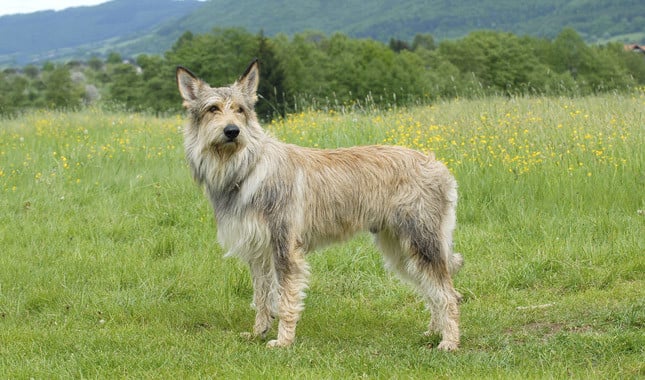15 Thai Ridgeback Traits That Make Them Unique Companions

Fierce, elegant, and little-known outside its homeland, the Thai Ridgeback is a breed steeped in mystery and ancient utility. With a unique ridge of hair running along its spine and a temperament as bold as its appearance, this rare dog intrigues enthusiasts and historians alike. Below are fifteen fascinating facts that uncover its unique character and origins.
Ancient Origins

Archaeological evidence links the Thai Ridgeback to artifacts over 1,000 years old found in eastern Thailand. These dogs were bred as all-purpose companions for hunting and pulling carts in remote rural areas. Isolated for centuries, the breed evolved with minimal outside influence, and this geographical seclusion preserved its purity and rarity.
One Of Only Three Ridgeback Breeds

Only two other breeds share the ridgeback trait: the Rhodesian Ridgeback and the Phu Quoc Ridgeback of Vietnam. The Thai Ridgeback’s ridge can display up to eight distinct patterns, making it both a genetic and visual marvel. Breeders use these patterns as a marker of lineage and distinction.
Naturally Muscular

Due to its working dog heritage, the Thai Ridgeback has a naturally lean, muscular physique built for strength and agility. Its powerful muscles are evident even without intense training. This breed’s exceptional reflexes and athleticism highlight its innate capability to excel in various physical activities, making it a dynamic and sturdy companion.
Unusual Coat And Skin

A short, smooth coat with minimal undercoat helps the Thai Ridgeback handle Thailand’s tropical climate. The loose skin also adds mobility and protection during fights with snakes or wild animals. Its short coat makes it easier to spot and remove ticks and fleas. Still, regular parasite checks and preventive treatments are recommended.
Incredibly Rare

Until the 1990s, the Thai Ridgeback was almost completely unknown outside Thailand. Export restrictions and their rarity limited global access. Even today, it remains a rare sight in Western countries, with most breed populations concentrated in Thailand and a few kennels in the United States, Japan, and parts of Europe.
Independent And Wary Of Strangers

Thai Ridgebacks don’t take kindly to unfamiliar faces. Bred to guard isolated homes without human supervision, they developed a strong instinct for self-reliance and suspicion. Early socialization is important, or they may become overly territorial. Many will first observe intruders before responding—an unnerving trait for the unprepared.
Remarkably Quiet And Alert

Unlike many watchdogs, the Thai Ridgeback does not bark frequently. It tends to stay silent unless there’s a real threat, which makes its warnings all the more serious. Such quiet vigilance was prized by villagers, who relied on it to detect threats from thieves or predators without drawing attention.
Low-Maintenance Cleanliness

The Thai Ridgeback’s short, sleek coat minimizes dirt buildup and helps the breed maintain a naturally clean appearance. Unlike long-haired dogs, they rarely trap debris, reducing the need for frequent baths. They also produce less odor, which makes them ideal for indoor living. These traits make them a practical, low-maintenance choice for owners seeking effortless care.
Distinct Gait

The Thai Ridgeback moves with a fluid, agile trot, reflecting its hunting style. Its ground-covering stride aided in stalking prey like boar or monitor lizards in dense undergrowth. Additionally, the breed’s powerful hind legs and quick reflexes provide exceptional speed, balance, and precision, which are important requirements for hunting.
Prone To Dermoid Sinus

This breed is prone to a congenital condition called dermoid sinus, a tube-like defect beneath the skin along the spine. While not unique to the breed, it appears more frequently here than in many others. Responsible ownership involves awareness of this issue, as it requires early veterinary screening and, if necessary, surgical correction to avoid complications.
Exceptional Jumper

Don’t be surprised if a Thai Ridgeback ends up on a table or scales a backyard wall. Their powerful hindquarters and agility make them skilled jumpers and climbers. In rural Thai homes, this ability helped them chase rats in high rafters or escape danger by leaping onto elevated platforms or roofs.
‘Smiling’ Ability

Some owners report that Thai Ridgebacks may curl their lips in a grin-like expression when excited, though this is not widely documented. While not a true smile, this rare facial movement fascinates owners and onlookers alike. The “ridgeback grin” is usually accompanied by a tail wag and relaxed posture, and it’s more common in socialized dogs.
Mistaken For Mixed Breeds

Due to their rarity and distinctive appearance, Thai Ridgebacks may be mistaken for mixed breeds, especially in regions unfamiliar with Asian dog breeds. Their sleek build, ridge-shaped fur pattern, and independent nature make them stand out. However, misidentification in Western shelters or among uninformed breeders contributes to their continued obscurity worldwide.
Built For Sprinting

Capable of achieving high speeds in short bursts, the Thai Ridgeback was once used to chase down prey like deer and wild pigs. Its long stride and deep chest support powerful sprints rather than endurance runs. The breed’s acceleration and ability to pivot quickly in open spaces can be jaw-dropping.
Loyalty And Reluctance To Rehome

Thai Ridgebacks form strong bonds with their owners, reflecting their history of working closely with humans in remote villages. Their territorial instincts and protective nature make them highly devoted but also resistant to rehoming. They struggle with adjusting to new environments, often displaying wariness toward strangers and requiring patient socialization to build new trust.






